Maintaining a thriving online business hinges on a steady influx of potential clients. Achieving this, however, can be quite the challenge when you lack a robust system for collecting their contact information. How do you go about establishing such a system? Today, we’ll look into the critical topic regarding lead generation sales funnel. This article will cover these aspects:
- Understanding the Lead Generation Sales Funnel- What does it entail, and how can it benefit your business?
- Difference between B2B and B2C Lead Generation Funnels.
- Different Stages of Sales Funnel
- Constructing a Lead Generation Funnel- A step-by-step guide to building a system that brings in potential customers.
Now, are you ready to kickstart your lead generation journey and boost your client base?
Understanding the Lead Generation Sales Funnel Stages

The stages of a lead generation sales funnel can vary depending on the perspective, but for the sake of simplicity, let’s categorize them into three primary sections.
- Top-Funnel Leads (Awareness): This is the initial stage where potential leads become aware of your product or service. They are just starting to explore their needs and possible solutions.
- Middle-Funnel Leads (Consideration): In this stage, prospects are considering their options and evaluating how your offering aligns with their requirements. They are actively seeking information to make informed decisions.
- Bottom-Funnel Leads (Conversion): At the final stage, these leads are ready to take action. They have decided to move forward and are considering making a purchase or conversion.
The company or sales team may dissect these stages for specific sales representative actions. However, in most cases, prospects typically fall into one of these three broad categories during their journey through the lead generation sales funnel.
Exploring the Awareness Stage

Before your prospects even realize your company exists, their journey to your doorstep has already begun. It’s important to understand that customers aren’t merely searching for products; they’re actively seeking solutions to their problems. For instance, if you run a marketing firm, let’s call it Lucas’ Marketing, prospective clients won’t typically be directly searching for “Lucas’ Marketing” online.
Instead, your introduction to their world occurs through top lead generation sales funnel advertising. When a small business requires marketing assistance, they turn to search engines like Google and type in queries such as “affordable marketing services” or “top marketing companies for small businesses.” This is the point where your company first comes into their view. Through various channels like blogs, social media, webpages, and other lead generation methods, your strategic goal is to position your company as the solution to their everyday challenges. This allows potential clients to begin exploring the solutions you provide.
At this stage, it’s also imperative to utilize prospecting tools and lead generation software to collect essential customer contact information. When someone clicks on your website or ad in response to their search, you want to be equipped to follow up with them effectively. Including a straightforward and compelling Call to Action (CTA) on your landing page, such as “learn more” or “sign up for a trial,” can facilitate the capture of their email.
With these initial steps in place, your team is now primed to commence outreach efforts to nurture and guide these prospects along their journey.
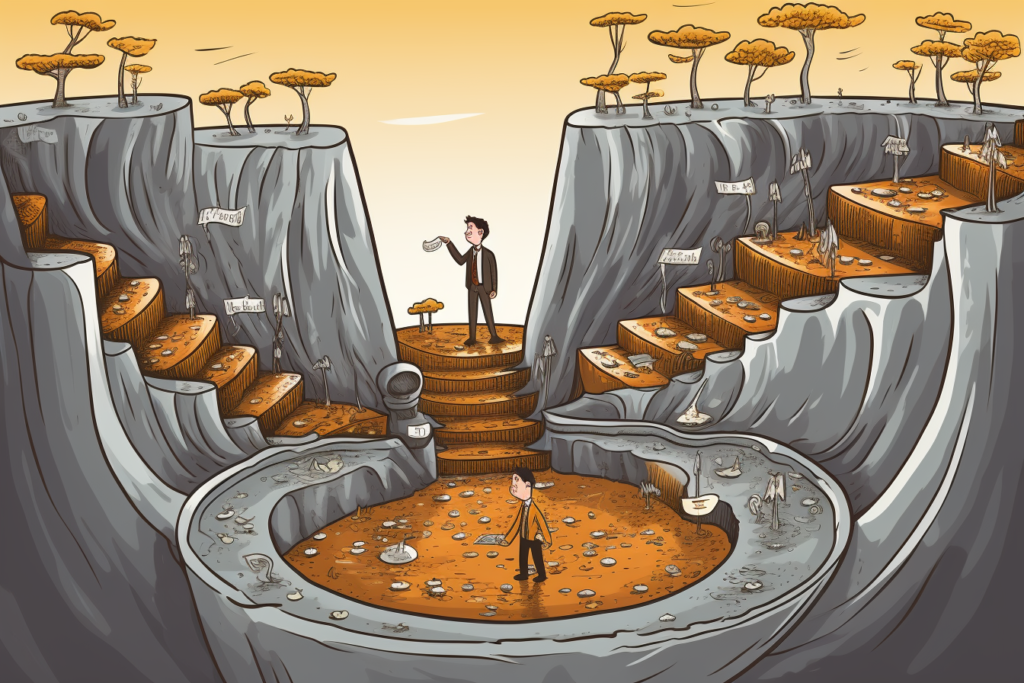
Middle-funnel leads find themselves in the consideration stage of the funnel, a crucial phase where they are fully aware of your product and are evaluating it as a potential solution to their problem. It’s worth noting that this is often the lengthiest phase of the lead generation sales funnel. This demands patience and a strategic approach.
Studies indicate that the average duration to progress through the consideration phase is 84 days, so prepare for the long journey ahead. Personalization and adaptability are your key allies here.
In this extended consideration stage, it’s essential to nurture middle-funnel leads with care and precision. Here are a few tips to guide you through this phase.
Maintain a Steady Email Campaign
A gentle and consistent email campaign is your ally. While you have the prospect’s attention, the aim is to keep it without overwhelming them.
Customize Your Messages
Personalization is crucial. Even a simple touch, like addressing them by name in the opening line, can go a long way in building trust.
Keep Interactions Concise
In these early stages, it’s best to keep your interactions short and to the point. Save detailed discussions for repeat customers or those closer to the buying stage. Your primary objective is to move leads closer to making a purchase; intricate product details can come later.
Conduct Research
Particularly in B2B sales, your leads often provide a work email as their contact. Take the time to research promising leads on platforms like LinkedIn. Familiarize yourself with their company and the challenges they may be facing. For instance, if they work for a startup, you wouldn’t want to propose your most expensive product.
Leverage CRM and Pipeline Software
Utilize Customer Relationship Management (CRM) or other pipeline software to track prospect engagement, clicks, and interactions. These tools will provide valuable insights.
In this stage, the goal for middle lead generation sales funnel leads is to establish trust. By building this trust, you pave the way for a smoother transition into the conversion stage when you make your pitch.
The Conversation Stage

Congratulations, you’ve made it to the conversation stage. Your lead is not just interested in your product; they have the means and the readiness to purchase. However, it’s important to remember that the journey is far from complete.
This phase is often where sales opportunities are sadly lost. Just because a prospect is poised to buy doesn’t necessarily mean they’ve fully committed to the purchase. People can be easily swayed and distracted, so your job, along with your sales team, is to continue nurturing them until the transaction is successfully concluded.
It’s important to understand that the journey doesn’t end with the lead generation sales funnel. Your ultimate objective is to transform this prospect into a customer who not only makes a purchase but progresses through the sales funnel as a loyal repeat customer. If you cease interactions with a prospect during the conversion stage, they may perceive you as solely interested in their money. This could lead them to take their business and look for a company that demonstrates genuine care.
An excellent customer relationship isn’t just about assisting prospects with their initial purchase; it’s about fostering trust and lasting connections. This not only enhances the chances of referrals and successful upsells but also bolsters your overall brand credibility. Your commitment to their needs goes a long way in building enduring customer loyalty.
B2B vs. B2C Lead Generation Sales Funnel: What Sets Them Apart?
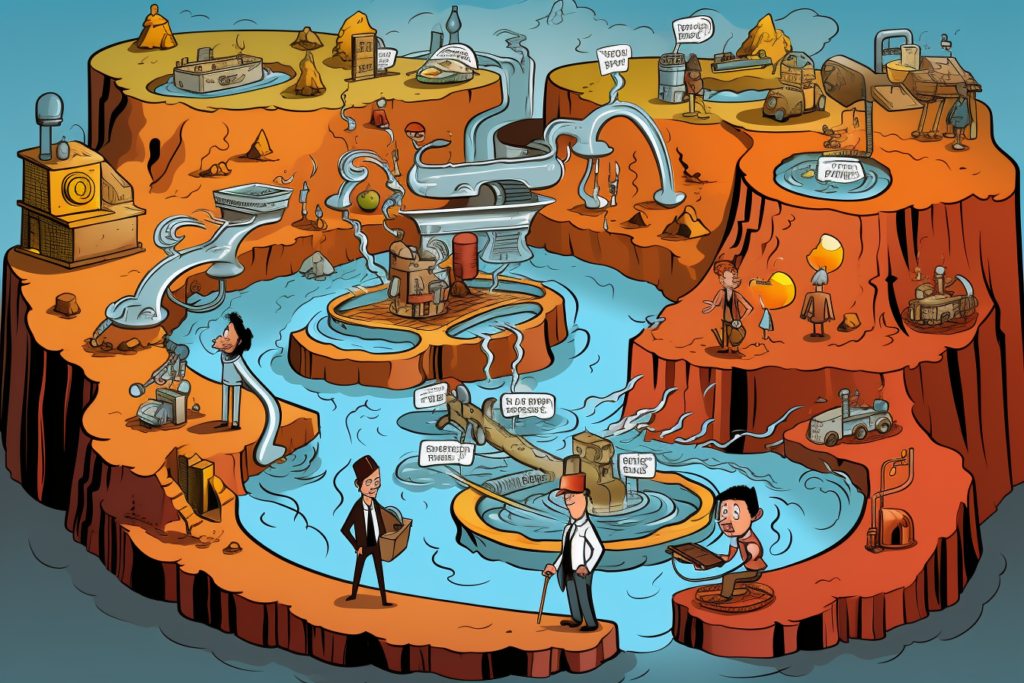
You might wonder about the key differences between B2B (business-to-business) and B2C (business-to-consumer) lead generation funnels.
Interestingly, the decisive factor doesn’t solely hinge on whether you’re targeting businesses or individual consumers. It predominantly revolves around the pricing of your products or services.
Here’s a handy rule of thumb to keep in mind: the higher the price tag attached to your offerings, the greater the value you must deliver within your lead generation sales funnel.
Why? Well, the provision of value is the linchpin for establishing trust. As the cost of your product or service rises, so does the level of trust required from potential customers to seal the deal. In essence, trust becomes the currency of higher-priced items, underscoring the critical role of value in your lead generation funnel.
Creating Your Own Lead Generation Sales Funnel: A Step-by-Step Guide
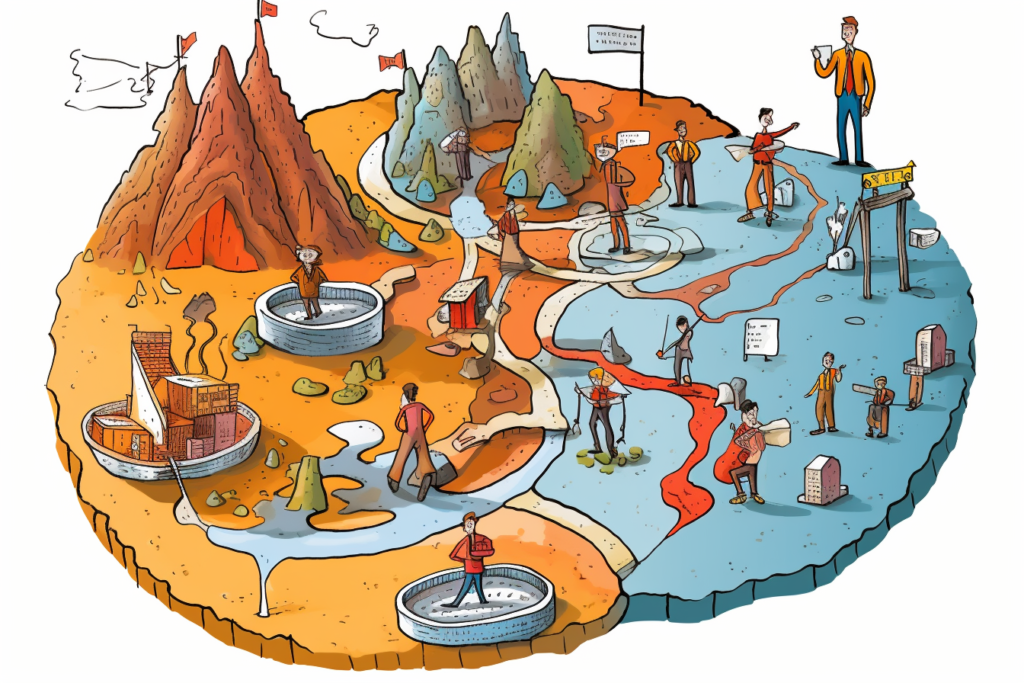
Building a lead generation sales funnel can be a game-changer for your business. To help you get started, here’s a practical seven-step process.
Step #1: Define Your Target Audience
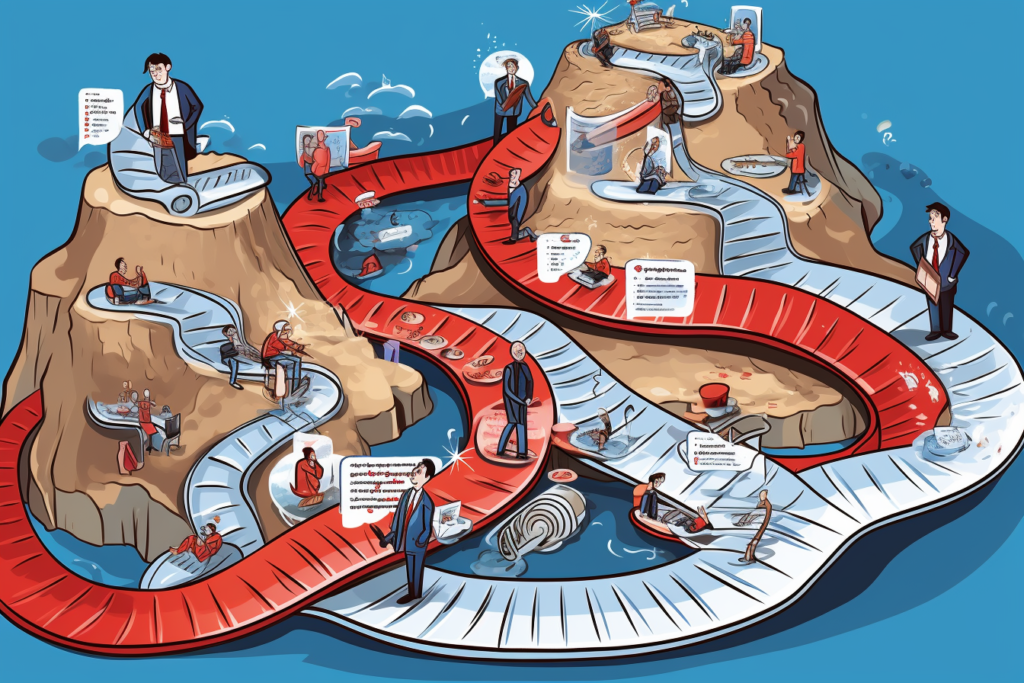
One of the foundational pillars of a successful lead generation sales funnel is understanding your ideal customers. Without this clarity, generating quality leads can be an uphill battle.
It’s crucial to remember that attempting to appeal to everyone often leads to resonating with no one. To avoid this, try to define your target audience precisely.
For businesses that have been up and running, tapping into customer data is a valuable starting point. Evaluate your customer information to discern who’s currently purchasing your products. Refrain from making assumptions; rely on the data.
Once you’ve identified your existing customers, it’s time to consider how you can attract more individuals similar to them.
However, if your business is still in its infancy, you must make an informed estimate. Consider who is most likely to benefit from your products and services. This educated guess will be your initial guide in defining your target audience.
Step #2: Identify a Problem That Your Target Audience Is Struggling With
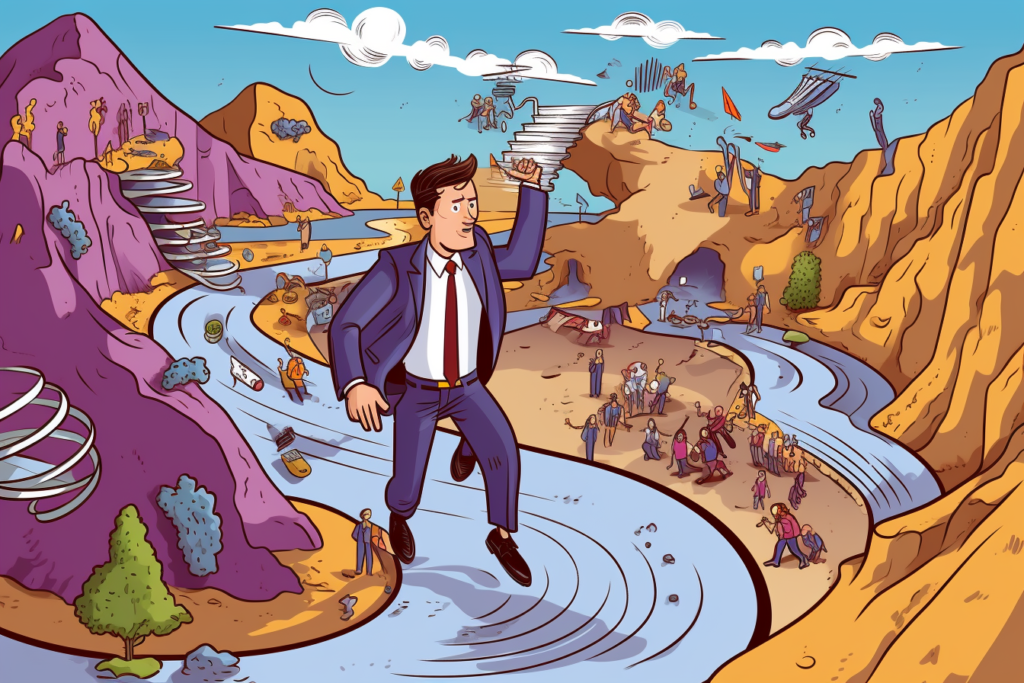
Now that you’ve pinpointed your ideal customers, the next lead generation sales funnel stage is to conduct customer research. Dive into their online hangouts and immerse yourself in the conversations taking place there.
This entails activities such as the following.
- Keeping a watchful eye on relevant Twitter hashtags.
- Subscribing to pertinent subreddits on Reddit.
- Registering on relevant online forums.
- Becoming a part of Facebook groups.
- Scouring the comments beneath relevant YouTube videos.
The objective here is to uncover a pressing problem that your ideal customers are grappling with. Ideally, this problem should either align with or be closely related to the issue that your front-end offer resolves.
Step #3: Create a Lead Magnet That Offers a Solution to That Problem
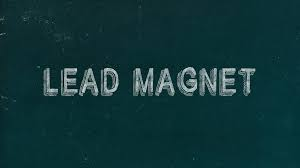
Once you’ve identified a problem that resonates with your audience, it’s time to craft a lead magnet that provides a solution.
Your lead magnet can take various forms, all of which should be easily downloadable or accessible online.
- Ebook.
- Engaging video course.
- Email course.
- Cheat sheet.
- Spreadsheet.
- Detailed step-by-step plan.
The choice of format should align with how your message is best conveyed. Put yourself in your ideal customer’s shoes and consider the format they’d find most convenient.
It’s important to approach the creation of your lead magnet with the same dedication and meticulousness that you employ for your paid products. The goal is to leave your ideal customer feeling that they’ve gained valuable insights and knowledge from your lead magnet. In this lead generation sales funnel stage, you need to establish trust and interest in your offerings.
Step #4: Create a Landing Page for Your Lead Magnet
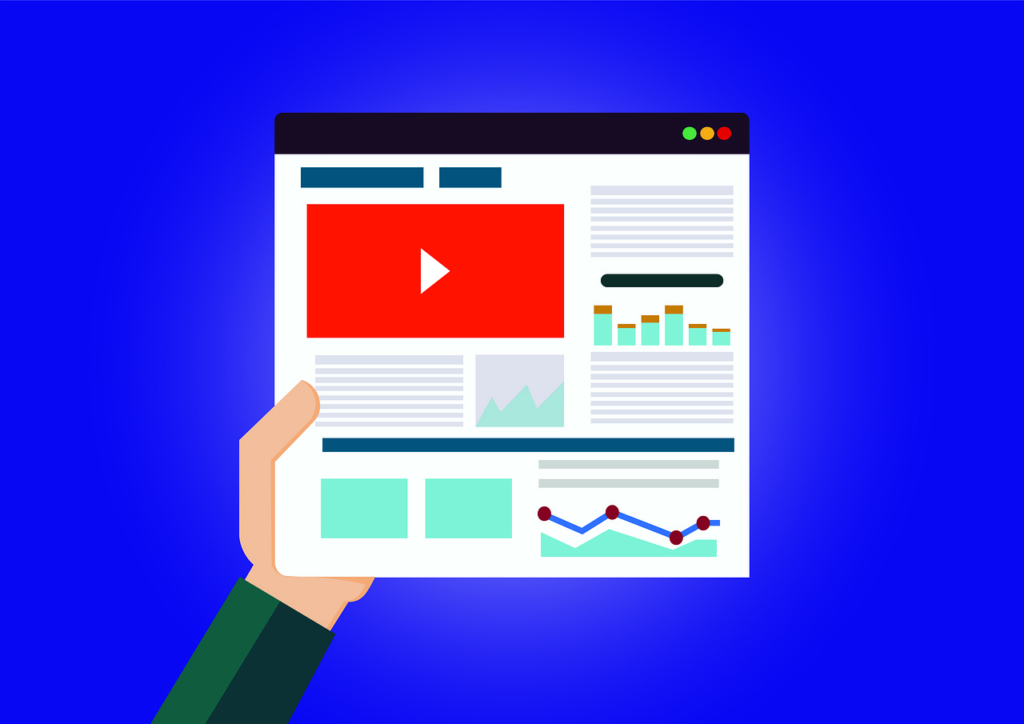
With your lead magnet ready, the next stepto the lead generation sales funnel is to craft a dedicated landing page for it. Think of this page as a sales pitch, except instead of asking for money, you’re requesting the potential customer’s email address.
Since lead magnets are offered for free, the persuasion required on their landing pages is relatively brief and to the point. These are commonly known as “squeeze pages.”
You might wonder if it’s worthwhile to invest effort in convincing people to download something for free. The answer is a resounding “yes,” and here’s why:
- A compelling lead magnet landing page attracts more downloads of your freebie.
- More downloads translate into more leads in your database to engage with.
- A larger pool of leads means more potential for sales.
In essence, treating your lead magnet landing page as if it were a full-fledged sales page is a strategic move that yields tangible benefits.
Step #5: Create a Lead Nurturing Email Autoresponder Sequence
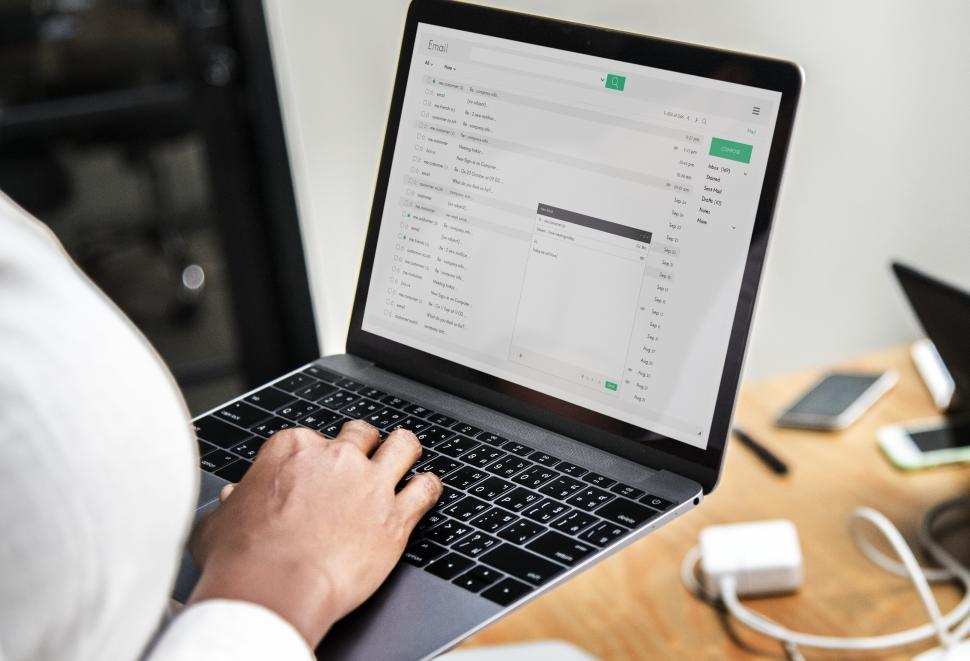
Together with your lead magnet and landing page, you’ll need a well-crafted lead nurturing email autoresponder sequence. This sequence comprises a series of automated emails sent to everyone who downloads your lead magnet.
Your email sequence should achieve the following:
- Provide Value- Each email should offer something valuable to the potential customer, nurturing their interest and trust.
- Warm Up to the Sale- Gradually introduce the potential customer to purchasing your front-end offer. This is about building a connection and understanding their needs.
- Make the Sales Pitch- Towards the end of the step, make a compelling pitch for your front-end offer. Communicate how it can address their needs and provide a solution.
The key here is to strike a balance between delivering value and promoting your product. Overemphasizing value might lead to missed sales opportunities while pushing the sale too hard could deter potential customers. A delicate equilibrium ensures that your lead nurturing sequence effectively guides prospects toward becoming paying customers.
Step #6: Commence Driving Traffic to the Lead Magnet Landing Page
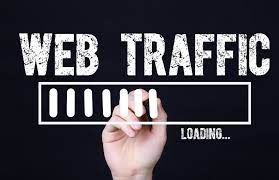
Now that you’ve established the critical components of your lead generation sales funnel, including a lead magnet, lead magnet landing page, and a lead nurturing email autoresponder sequence, it’s time to channel traffic to that landing page.
A swift and effective way to achieve this is through paid advertising. Setting up a Facebook or Instagram ad campaign can provide a rapid litmus test for the effectiveness of your lead generation sales funnel. Paid ads can deliver immediate insights into its performance.
However, it’s also prudent to consider a longer-term traffic generation strategy, such as SEO (Search Engine Optimization). By optimizing your web content for search engines, you aim to lessen your reliance on paid advertising over time.
Step #7: Analyze the Data and Adjust Accordingly

Once you’ve accumulated a substantial amount of data, it’s imperative to scrutinize it to pinpoint areas for improvement. During your analysis, be sure to examine the following.
- Ad Conversion Rates- Assess how effective your ads are at converting clicks into leads.
- Landing Page Conversion Rate- Evaluate the landing page’s ability to convert visitors into leads.
- Lead-to-Customer Conversion Rate- Analyze how many leads ultimately convert into paying customers.
Furthermore, pay special attention to any feedback from individuals who’ve downloaded your lead magnet. Their insights can be invaluable. What were their thoughts and experiences?
With a clear understanding of your conversion rates, you can embark on experiments to enhance them. This may involve refining the quality of traffic, testing different ad creatives, implementing proven conversion rate optimization techniques, and more. Regular assessment and adaptation are key to the ongoing success of your lead generation sales funnel.
Conclusion
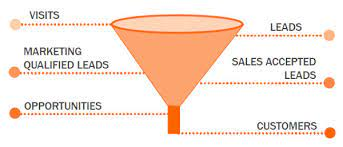
Sales indeed serve as the lifeblood of any thriving business.
However, achieving those crucial sales targets is challenging if you’re not consistently nurturing a steady stream of qualified leads. That’s precisely why the establishment of a well-structured lead generation system is a mission-critical endeavor, one that can’t be left to mere chance.
Invest the time and effort to construct a lead generation sales funnel that aligns with your unique business needs. While it may entail some trial and error, once you’ve honed your approach, you’ll have the invaluable ability to put lead generation on autopilot. From that point onward, there’s no turning back.
The future of your business depends on the leads you generate today. So, invest, fine-tune your lead generation sales funnel, and set your business on a path of sustained growth and success.


